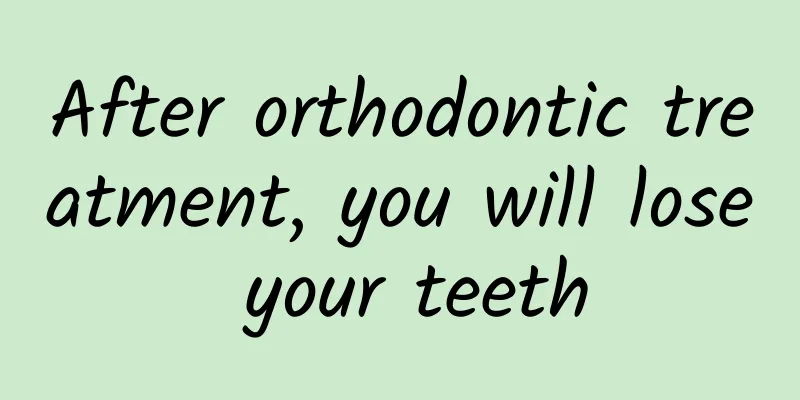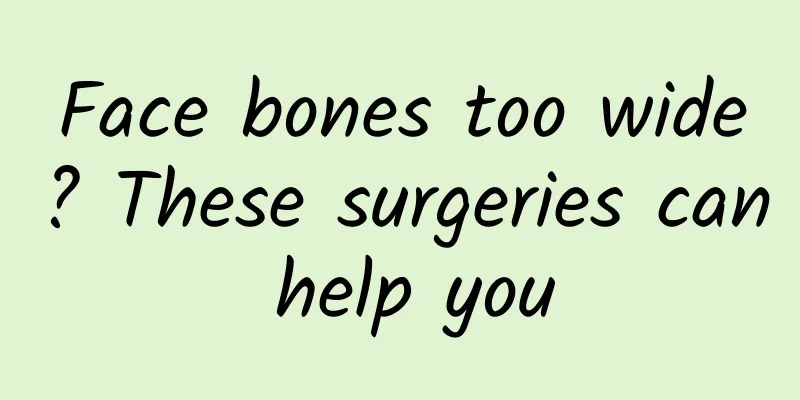After orthodontic treatment, you will lose your teeth

|
With the development of society, people's pace is getting faster and faster, and the development of cosmetic surgery technology has also stepped into a new level, especially for some women who love beauty. They do not allow their bodies to have any flaws. They want to get the desired effect wherever there is something wrong, especially on the face, eyes, nose, mouth, teeth, etc. Orthodontics is now popular, which straightens out uneven teeth, but many people worry about whether they will be injured when they get old after orthodontic treatment? . Will my teeth move when I get older after orthodontic treatment? First, it is necessary to understand some knowledge about tooth structure. Human teeth are divided into two parts: the part exposed in the oral cavity is called the crown (that is, the tooth that can be seen in the mouth), and the part growing in the gums is called the root. The roots of normal teeth are completely buried in the alveolar bone and are therefore very strong. But teeth are not like nails in a board and cannot move at all. In fact, the teeth are "suspended" in the alveolar bone, and this suspension system is the periodontal membrane. The elasticity and toughness of the periodontal membrane allow the teeth to be somewhat loose when performing their functions to avoid damage. This phenomenon is called physiological mobility of teeth. When the alveolar bone around the tooth roots is gradually absorbed due to certain reasons (such as long-term periodontal disease), the teeth will begin to loosen. This loosening is pathological. The more the alveolar bone is absorbed, the looser the teeth become; when the alveolar bone is completely absorbed, the teeth will fall out. Currently in our country, the incidence of periodontal disease is over 80%. The main reason why teeth become loose and fall out as people age is periodontal disease. In other words, loose teeth as people age have nothing to do with orthodontic treatment. In fact, the neat alignment of teeth after orthodontic treatment is beneficial to oral hygiene and can assist in the treatment of periodontal disease. In this sense, orthodontics can prevent teeth from loosening as people age. During the process of orthodontic treatment, structures such as the periodontal membrane and alveolar bone will also undergo corresponding reconstruction. Some patients may experience mild loose teeth, soreness, swelling, discomfort, and difficulty chewing, which are all normal reactions during the treatment process. After the correction is completed, these phenomena will disappear and the teeth will return to normal. After a tooth is extracted, if it is not treated for a long time (dentures, orthodontics, etc.), the adjacent teeth may tilt toward the missing tooth area, causing periodontal disease, occlusal trauma and other problems, causing the gums to loosen. However, as long as the correction is done in time, the extraction gap is closed, and the normal occlusion relationship is restored, the teeth will not become loose. |
<<: Dampness causes itchy bumps
>>: Sleeping feet shake every once in a while
Recommend
How to prevent brain tumors, six ways to stay away from brain tumors
Brain tumor is a disease that is difficult to cur...
Ovarian cystic echo
There are many causes of ovarian cystic solid ech...
Can moderate fatty liver heal itself?
There are many causes of fatty liver, and whether...
How to remove freckles with angelica
Angelica is a plant with outstanding medicinal ef...
What to do if you have bleeding due to constipation
Constipation bleeding may seem like a relatively ...
Anxiety can actually cause pain in the body
There are many symptoms of anxiety disorder, the ...
8 acupoint massage techniques to get rid of minor body ailments
The typical abdominal pain of acute appendicitis ...
What causes white hair on forehead?
Growing gray hair is a nightmare for many people, ...
How to detox after inhaling secondhand smoke
I believe everyone understands the harm caused by...
What medicine can I take to delay ejaculation quickly?
Premature ejaculation, also known as premature ej...
Qingwen Jiedu Oral Liquid
Qingwen Jiedu Oral Liquid is a medicine for poult...
Scar repair after stitches
In our daily lives, we often encounter various in...
What to do if your cervical vertebra is fractured
Although cervical vertebra fractures are not part...
What are the causes of prolapsed internal hemorrhoids? What are the symptoms of internal hemorrhoids?
Prolapsed internal hemorrhoids is a more serious ...
Clinical manifestations of congenital hematopoietic disorders
Congenital hematopoietic dysfunction is also rela...









